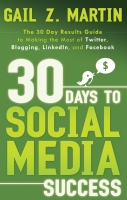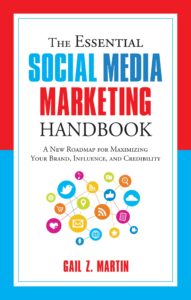 By Gail Z. Martin
By Gail Z. Martin
If you haven’t already surveyed your best customers to see what they are reading, watching and listening to, now is the time! Online survey tools are easy to use and inexpensive. If you use Constant Contact for your email newsletters, look into their survey tool to include a survey in your newsletter. Or, try out sites like SurveyMonkey.com that provide basic survey capabilities for free.
When you target your PR to the sites and publications your best customers are already reading, you create several important advantages for your PR campaign. First, you remove the clutter of sending releases to a huge mailing list of publications that are largely not interested in your news. You can invest your time better elsewhere. Next, by shrinking the number of media outlets you’re targeting, you can invest the time to get to know which reporters are covering subjects relevant to your news, so that your pitches can be pitch-perfect. Finally, and very importantly, these niche publications have already won the trust and loyalty of your best customers. They have become trusted advisors. When your news and announcements appear in these niche publications, readers are likely to accept it as a referral from a friend.
It’s useful to have an idea of the nationwide size of your total target audience. Do they number in the millions (for example, small business owners or participants in multi-level marketing programs), or in the thousands (yacht owners, shipwreck enthusiasts, etc.)? Don’t stop with a broad catch-all category like “small business owners.” In the U.S., a company is officially a “small business” up to 500 employees. Is your target audience a “big” small business or a “small” small business?
You’ll have the best results if you can get specific. For example, do you specialize in helping start-up companies, specifically those that have been in business less than three years and have sales under $1 million? Or do you only prefer to work with companies that have been in business for over 10 years and need to address issues with succession planning and mature markets? All “small business” is not alike. Don’t be afraid to start with a fairly tight definition of your ideal customer. Once you successfully reach that narrow audience, you’ll become attractive to broader audiences.
Having a fairly accurate idea of the size of your total target audience will help you target your online PR and marketing. If you know, for example, that there are 500,000 potential customers for your service, then a publication, Web site or blog that reaches 50,000 people is reaching ten percent of the total market, making it a potentially valuable outlet for your news. Without the knowledge of your total market, you might have been tempted to bypass a site that didn’t have a readership in the millions (that old mass market mindset again).
You can use sites like Alexa.com to gauge traffic on the Web sites, blogs, podcasts and other online sites that you are considering for your PR outreach. Tools like Alexa.com can help you find the sites with the most traffic, meaning that getting a news item picked up by those sites is likely to put you in front of a large number of people who are ideal prospects. It can also help you gauge how many people are seeing your release on the sites where it’s been posted online, and give you ideas of new sites to target with future releases that you might not have otherwise discovered.
Realize that even among sites that reach your ideal audience, size isn’t the only thing that matters. Some smaller publications are read by people who are “influencers”—trend setters, authors, reporters and others whose opinions carry a lot of weight. These sites may have a smaller audience, but the audience’s importance is larger than its size. Likewise, a new site might not yet have a big following, but you might be able to establish a relationship with the blogger or site owner very easily during the online publication’s early days, so that you’re a trusted news source when the site gains popularity. Realize that some small sites have a very dedicated following who are true insiders within your niche audience. When your news reaches them through a site they trust, these insiders are in a position to help you grow by inviting you to speak, purchasing your product in bulk or recommending them to their own membership. Smaller sites can be extremely influential, so don’t overlook them as you build your media list.
With the continual evolution of services available via mobile phone and the advent of “smart phones” with Web and data capabilities, a growing number of consumers are reading their email and surfing the Web through their phones. In the same way that permission-based email marketing revolutionized promotion in the 1990s and early 2000s, mobile phone text marketing is poised to reshape niche market promotion in the years to come.
If your message is timely and your target audience would consider it to be very important, text messaging may be a valuable tool for you. For example, restaurants and night spots can text a message to their loyal customers about dining or drink specials or nightly entertainment. Customers who make purchases on a predictable schedule might be happy to find a discount coupon in their text inbox timed for their normal purchasing habits. Sites like MakeMeSocial.net and other providers help businesses create and manage mobile phone text campaigns. Text message marketing is here to stay, so file it away as a “maybe” for your future promotional needs.
(Excerpted from the brand new book 30 Days to Online PR and Marketing Success: The 30 Day Results Guide to Making the Most of Twitter, Facebook, Linked In and Blogging to Grab Headlines and Get Clients by Gail Z. Martin) . Coming in November from Career Press and available for pre-order now on Amazon!







